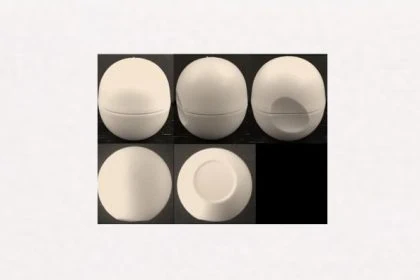The CFI has ruled in a long-running trademark dispute over the Union mark Orange between the parties to the dispute MHCS versus Lidl. Is the mark Orange a colour mark or a figurative mark? In any case, the Board of Appeal was not allowed to examine this independently and on own motion.
The facts
 In February 1998, SA Veuve Cliquot Ponsardin, the legal predecessor of the applicant MHCS (France), applied for registration of an Unionmark claiming “”Champagne wines” of Nice Class 33. A certain shade of the colour orange was to be protected by this mark, a figurative mark in the application form.
In February 1998, SA Veuve Cliquot Ponsardin, the legal predecessor of the applicant MHCS (France), applied for registration of an Unionmark claiming “”Champagne wines” of Nice Class 33. A certain shade of the colour orange was to be protected by this mark, a figurative mark in the application form.
In the trademark application this was noted as follows: “scientific definition: trichromatic coordinates/colour characteristics: x 0.520, y 0.428 – diffuse reflectance 42.3% – dominant wavelength 586.5 mm – excitation purity 0.860 – colorimetric purity: 0.894”.
Colour mark or figurative mark
It was not until March 2007 that this mark Orange was registered at the EUIPO, because the Trademark Office didn’t see any distinctive character of the mark Orange. However, in 2006, SA Veuve Cliquot Ponsardin won the desired trademark application before the Second Board of Appeal of the EUIPO (R 148/2004-2). Importantly, the examiner had found that it was a figurative mark (which is how the Orange mark had been registered), but the Second Board of Appeal found that it was a colour mark.
Colour mark or figurative mark – is there any difference at all? In a nutshell: Yes! Because colour marks have no limitation in shape, whereas figurative marks have a clearly defined contour. This contour influences the consumer’s perception and also affects the distinctiveness of a mark.
Application for invalidity of the mark Orange – by Lidl
In November 2015, the intervener, Lidl Stiftung & Co. KG (Germany), filed an application for a declaration of invalidity of the contested mark. Lidl argued that the indication of the claimed shade on the basis of a scientific definition was not sufficient and that the mark was devoid of any distinctive character.
The Cancellation Division rejected the application for a declaration of invalidity, but the First Board of Appeal overturned this decision in February 2020 and referred the case back to the Cancellation Division. In this decision, the First Board of Appeal reviewed the nature of the mark in dispute, i.e. whether it was a colour mark or a figurative mark. The disputed mark had been registered as a figurative mark – and the choice of the type of mark was a matter for the applicant. The choice of a particular classification could not be considered a manifest error in the present case, the First Board of Appeal ruled. The Second Board of Appeal was not empowered to reclassify the mark ex officio, namely as a colour mark. For this reason, the First Board of Appeal also referred the case back to the Cancellation Division; the parties should be able to re-examine their rights upon reclassification of the mark in dispute as a figurative mark.
MHCS appealed against this decision before the European Court of Justice (European Court of First Instance (CFI)).
Review of the nature of the mark – admissible or not?
In essence, MGCS argued that the First Board of Appeal had wrongly reviewed the nature of the mark in dispute, as this was not an issue raised by the parties.
The CFI upheld this claim and held that the First Board of Appeal had exceeded its jurisdiction. This was because the decision of the Second Board of Appeal of 26 April 2006 (R 148/2004-2) had concluded the registration procedure, and in that decision the mark in dispute was determined to be a colour mark, the CFI explained. It is true that, according to case law, the EUIPO may base a decision – in addition to the facts and evidence submitted by the parties – on further facts which are common knowledge, i.e. which may be known to anyone and which were established in the course of the invalidity proceedings. However, this was not the case in the present case, the CFI ruled.
The EUIPO had wrongly not corrected the registration of the contested mark as an “other mark” or as a “colour mark” instead of a “figurative mark”, the court added. This finding of the CFI is all the more interesting as the applicant had never requested a reclassification of the contested mark in the EUIPO database. According to the CFI, the EUIPO should therefore have reclassified the Orange mark on its own motion.
Infringement of the Charter of Fundamental Rights of the EU
In addition, the CFI also upheld MHCS’s plea that the review of the nature of the mark infringed its rights under the Charter of Fundamental Rights of the European Union. This was because the First Board of Appeal had not questioned the parties, in particular the applicant, on the issue of the nature of the challenged mark Orange, which it had raised of its own motion. In doing so, however, it had infringed the applicant’s rights of defence guaranteed by the second sentence of Article 94(1) of Regulation No 2017/1001, the CFI ruled.
The rights of defence could in no way be preserved by referring the case back to the Cancellation Division, the court explained. This is because the interpretation given by the First Board of Appeal to the Cancellation Division, to which the case is remitted pursuant to Article 71(2) of Regulation No 2017/1001, is binding. In the present case, in the light of the reasoning of the contested decision, that interpretation necessarily would lead to the contested mark being classified as a figurative mark.
However, this did not happen. In the end, the CFI upheld the action of MHCS and annulled the decision of the First Board of Appeal of February 2020 (R 2392/2018-1). So, MHCS’s orange mark is now considered a colour mark.
Do you also want to protect or defend a product?
Our attorneys have many years of expertise in trade mark law and design law as well as in the entire field of intellectual property and are authorised to represent you before any court – in Germany and also internationally.
Please contact us if you are interested.
Sources (text and image):








Leave a Reply